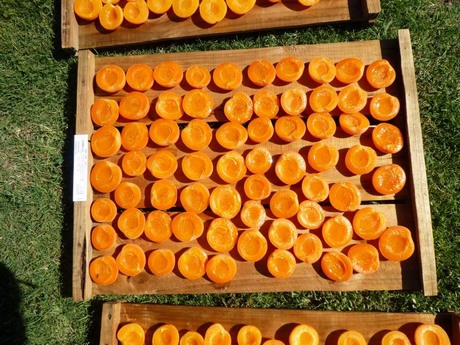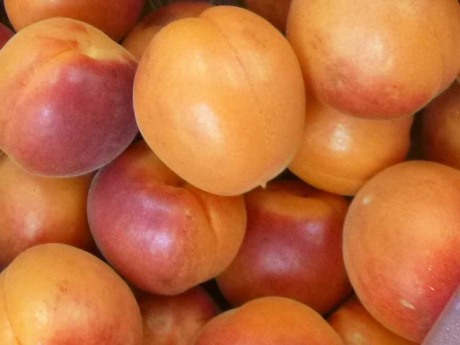The release of new apricot varieties could help go a long way to restoring flavour to the fruit and improving consumer's eating experience, according to the South Australian Research and Development Institute (SARDI).
As part of the National Apricot Breeding Program, 17 new varieties of the stone fruit were released. Leader of the Fruit Tree Breeding program Darren Graetz says flavour was one of the important factors in the apricot breeding - especially in the fresh sector - therefore every one that was released underwent consumer testing.
"It frustrates me that when you talk to people everyone has an opinion on flavour, but no-one actually measured it - that's what we tried to do here," Mr Graetz said. "It seems fairly obvious but very little, if any, flavour-panelling against whatever else is available seems to be carried out. For a fresh eating consumer commodity that appears a fairly basic omission. If you talk to some people in the industry many will say they want deep orange colour and block red blush. That seems to be marketers saying they want it to catch consumers eye - yes, they will buy it, but unless it actually tastes good consumers won't continue to buy it. Consumers these days have too many other options"

He adds that this is the reason apricots have lost so much market share to other snack products.
"I fear we have almost burnt an entire generation of apricot consumers, because only our parents remember apricots were lovely, when you could pick them off your own tree and had exposure to varieties with flavour," Mr Graetz said. "Then the focus for marketers changed to flashy cosmetic looks and durability to travel further and further. The results have been a succession of nice looking apricots that have unsatisfactory flavour. So, apricots as a commodity have really suffered. I hope these (varieties) go a long way to fixing that."

The 17 varieties were split up into three main categories based on their use and flavour profile. Five are the FlavourCot varieties which are the complex high flavour lines, three TastiCot varieties which are standard flavours that have a pleasant, very sweet flavour with balanced acidity, and nine RiverCot varieties, which are mainly for drying with different levels of sweet, complex flavours. But Mr Graetz says six of the Rivercots could be dual purpose and also serve the fresh market.

As part of the testing the apricots were put through the randomised blind consumer panels, where participants were asked to provide a rating for a number of questions; from overall eating experience, skin thickness, firmness, flavour, sweetness and sourness. Mr Graetz says all of the new apricots scored well above existing varieties at similar maturities for the critical issues of flavour and eating experience.
"For the fresh varieties this was all about quantifying perception of eating experience and flavour," he said. "Essentially at the end of the day all the varieties that we chose to release scored highly. Flavour can be a bit variable between years and the maturity time of when you get the fruit. We tried to make them as comparable as we could, because if you have a really heavy crop, that can suppress accumulation of sugars and overall flavour. That's just a physiological consequence of crop load."

Flavour is also important in dried apricot production, which has traditionally had access to just 3 varieties: Storey, Moorpark, and Hunter. Mr Graetz says these old varieties typically have fruit sugar levels between 16-18 brix ripe and dry ratios of around 6, while lot of the new material will be over 20 brix, which translates to dry ratios in the 4's.
"This is a significant advantage because more fruit sugars means more weight of product at the end and you get paid more - so in a dried sense that's where you get your advantage," he said. "So, what we wanted to do was breed full coloured higher sugar lines that crop consistently within our environment and extend the harvest window. Traditionally that was mid-December to mid-January. So, it is not very long at all. We were looking to go to the end of January, but the way it has turned out, we've managed to go mid-November to mid-January. So, it extended earlier rather than later a consequence of the higher sugar genetics we used."
The reason for the introduction for so many varieties at once, according to Mr Graetz, is that apricots are quite a site specific crop, meaning that it is not a one size fits all situations, and different growers will benefit from different varieties depending on their situation. While there is no timeline expectation on the planting process, the next step for SARDI is getting growers to take the step and incorporate some of the new varieties into their operation and see these benefits themselves.

"What it is going to take now is people that are more progressive to get some in the ground, then expect there to be a bit of a lull," he said. "Until they start to see the fruit coming off of them. Then hopefully the neighbours that were too conservative to take the step themselves will also see what's possible, then there will be another spike in plantings. I fully expect there will be a core group of varieties that will be highly planted ultimately, a few moderately, and some will be just be odd growers here and there. But it's getting people to take them up and put them into the supply chain before we can get some customer pull through the system."
He says the varieties offer a number of incentives for growth in the dried industry, including the higher more regular cropping with better quality leading to higher returns, as well as a harvest window away from the busy Christmas period.
"Hopefully there will be an upsurge in the industry, it might take a bit, but those people that do adopt them will be more efficient," Mr Graetz said. "We think you should be able to get crops of 25 tonnes per hectare on a regular basis. So, we think the returns are coming back in the drying side of the industry and it is just a matter of growers getting efficient and controlling costs. While the fresh market industry it is about swinging it back to being consumer focused quality product again. At the end of the day these new varieties will allow them to give consumers a good eating experience - and more importantly encourage them to come back and buy again."
For more information
Darren Graetz
South Australian Research and Development Institute
Phone: +61 401 122 141
Email: [email protected]
Website: www.pir.sa.gov.au/primary_industry/horticulture/national_apricot_breeding_program
